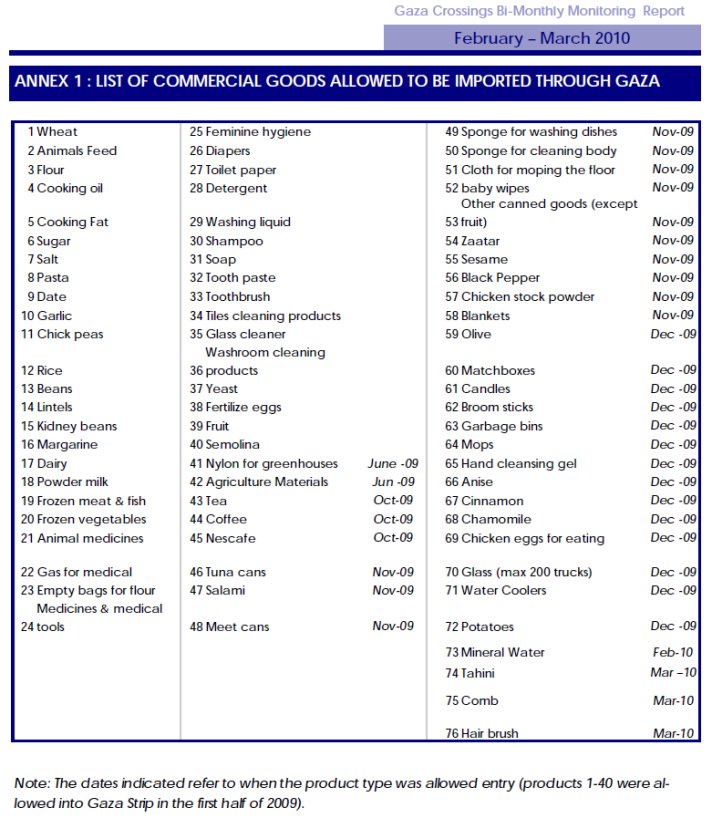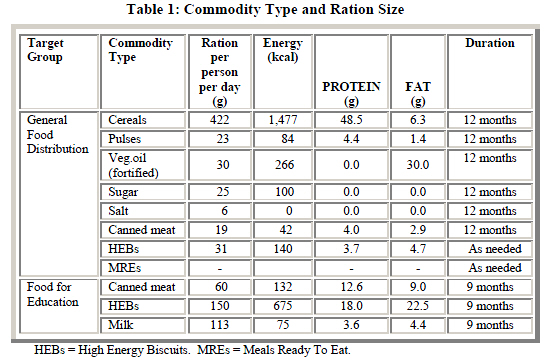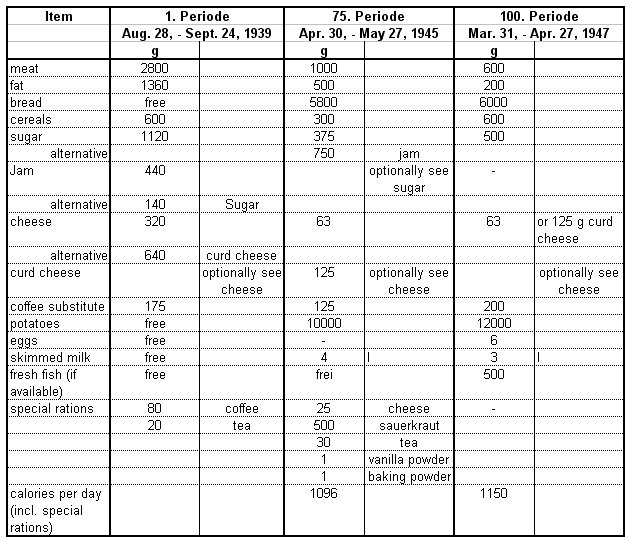



| How many calories does a person need? On this earth there are millions and millions of people who are malnourished and die of malnourishment, but except for Gaza there is hardly a place where people are intentionally put 'on a diet' for political reasons. I have to be careful so that there will be no misunderstanding about what I will try to exemplify in the following. As there was in Germany after the Second World War, there is an occupying power in Gaza which, according to International Law, is responsible for the well-being of the population. Israel has fulfilled this obligation only to a very limited extent over the last years. Furthermore, the 'United Nations Relief and Works Agency for Palestine Refugees in the Near East' (UNRWA) is active in Gaza. It was founded after the war of 1948 for the refugees. It operates schools, for example, but it also distributes food for those in need. In Gaza 70 % of the population are refugees or their descendants. Then there is the World Food Programme (WFP) of the United Nations that operates worldwide in fighting hunger. The table shows the items that Israel allowed into Gaza from the beginning of the year 2009 up until March 2010.  Everything on the list – whenever available – can be bought. However, it is different from the situation in Germany after the war, because there are no food ration cards. Those rations also had to be paid for. In the meantime 80 % of the population in Gaza have food support from the UN. The food rations distributed by the UN apparently consist mainly of carbohydrates. Through my few accidental contacts to the UN in Gaza I have tried to find out what exactly is distributed. My contact persons could only pass on the question. This is all that came out of it: The WFP food package received by
both social hardship cases (caseload served by WFP through MSA)
and vulnerable groups (caseload served by WFP through CHF) includes: - WHFL - salt - sugar - pulses - veg oil The size of the food parcel depends on the HH size. The food parcel covers 90% of kcal needs of social hardship cases and 70%-80% of kcal needs of vulnerable groups over a period of 2 months. WFP: World Food Programme MSA: Ministry of Social Affairs CHF: CHF international (humanitarian organisation, originally 'Cooperative Housing Foundation') WHFL: wheat flour veg oil: vegetable oil HH: household In order to find out what '90% of kcal needs' actually means and what is contained in the UNRWA package, I would have had to continue my inquiry. I had searched for quite some time in the internet for an answer and finally was successful in finding at least some data with respect to the WFP quotations (WFP, "Emergency Food Assistance for Operation Lifeline Gaza").  During the time between Jan. 20, 2009 and Jan. 19, 2010, the WFP took care of 350,000 people in Gaza. For food $47,227,918 were spent and 73,334,000 kg of food were distributed. On the average this amounts to $ 0,35 and 0,55 kg, repectively, per person and day. Just as the 'humanitarian' deliveries of the occupying power, the aid packages mainly consist of carbohydrates and fat. The children get 0.1 liter of milk per day. The values in the table apparently correspond to 100 % of the kcal needs, which thus amounts to approximately 2100 kcal. An excursion into the past I was interested in a comparison with the postwar period in Germany, of which I have a spotty memory (I grew up in Berlin, but we were fortunate to have a garden). In the internet I found only few data. Munich has a city archive that contains vast amounts of records from that time, but mostly proceedings of meetings that were concerned with special problems. One proceeding from the year 1947 contains some data and some of the text also appears to me to be of interest: "An adult needs for office work, i.e. for an in no way physically strenuous activity, 2400 calories per day. Even somebody who spends the whole day in bed needs 1700 calories. Incidentally, the calculation of calories is a poor reference for the quality of our alimentation. ... The content of calories of the food gives a vivid image by number about the burning process taking place in the human body during food intake, but it says nothing about the content of fat, protein and carbohydrates of the various foodstuffs. For the real value of the food, not the calorific value, expressed in calories, is of importance, but the content of protein and fat. From bread alone – and this can be any quantity – a human can not survive. This is apparently what our population feels when it talks hard (contemptuously) of calory swindle." " In many areas of Germany the supply decreased dramatically during the time from 1945 to 1948. Judged by the calory values, in Munich the supply was consistently bad during this period. In the table one can see that even though the calory value remained approximately the same, the supply of meat and fat was about cut in half.  An addenda from an 53 page long article about the economic development in Germany after World War II (Bernd Klemm/ GŁnter J. Trittel): "In order to get an appropriate idea about the extent of the effects of the food crisis, one has to become aware that a large part of the German population had to live for three years from rations that on the average reached only half the pre-war level of 3000 kcal and thus corresponded to approximately the official standard rate for concentration camp "subsistence" of 1636 kcal. On the statistical average they consisted of 250 g bread, 20 g cereals, 360 g potatoes, 15 g fat and 30 g meat. Always in the spring of the years 1946, 1947 and 1948, especially in the urban centers like in the Ruhr area, the allocated food rations sank to below 1000 calories per day. In addition to the quantitative halving of the food distribution a decrease in the quality occurred. Due to the reduced allocation of meat and fat the daily protein content of the food sank from 85 g (1938) to 35 g (1945), the supply of fat even sank from 120 g before the war to sometimes only 5,5 g in the spring of 1948. This catastrophic food situation forced large sections of the population to invest a large part of their energy to tap additional sources for food – through keeping a garden, black market dealings, forage trips, theft. But the existing resources put a narrow limit to these efforts. During the years 1945/46 until 1948 approximately 300 kcal could be generated from illegal sources or gardens in addition to the official allocation. For many they were essential for surviving, though." |